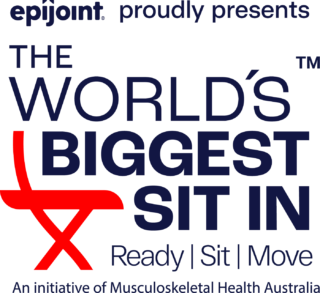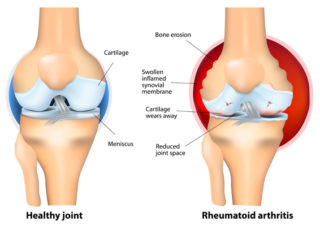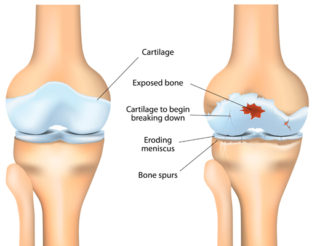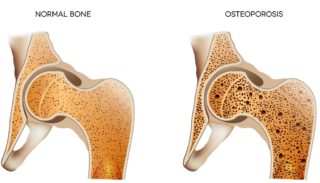As our population ages, ensuring healthcare is inclusive, effective, and tailored to the needs of older adults has become more urgent than ever. Musculoskeletal health is one area where ageism—discrimination based on age—can sometimes negatively affect care and outcomes. Common conditions such as arthritis, osteoporosis, and muscle weakness are prevalent among older adults, but they are sometimes dismissed or misunderstood due to stereotypes about ageing. By recognising these challenges and empowering older adults to take an active role in their healthcare, we can create a system that supports everyone’s musculoskeletal health.
The impact of ageism in healthcare
Ageism in healthcare refers to the bias or discrimination older adults may face, leading to low-quality healthcare or the invalidation of genuine health concerns. For musculoskeletal issues, this can mean healthcare providers downplaying symptoms like joint pain or stiffness, labelling them as “normal signs of ageing,” rather than identifying treatable conditions like arthritis or osteoporosis. Sadly, this ageist perspective can sometimes result in a diminished quality of life for many older adults.
While there are many healthcare professionals who do not allow ageism to influence their practice, unfortunately, it’s not always the case. Empowering older people to be well-informed and engaged in their healthcare decisions, increase their health literacy and drive decisions in consultation with their healthcare team are some of the key steps in overcoming the barriers posed by ageism.
Understanding musculoskeletal health and ageing
As we age, our muscles, bones, and joints naturally change. Conditions such as osteoarthritis (OA), osteoporosis, fractures, and sarcopenia (age-related muscle loss) can become more common and may significantly affect independence and mobility. However, many of these conditions are treatable or manageable with proper care.
- Osteoarthritis (OA): A degenerative joint condition that causes pain, stiffness, and reduced mobility.
- Osteoporosis: A condition where bones become brittle and prone to fractures.
- Fractures: Older adults are more vulnerable to fractures, particularly in the hips, spine, and wrists, due to a higher risk of falls.
- Muscle Weakness (Sarcopenia): The gradual loss of muscle mass and strength, which impairs balance and increases the risk of falls.
Although these conditions are common, they are often underestimated or wrongly seen as an inevitable part of getting older. This is where ageism can become a barrier to receiving the appropriate care. By understanding these conditions and advocating for the right treatment, older adults can better manage their health and access the support they need.
How ageism affects musculoskeletal healthcare
- When older adults report symptoms like joint pain or reduced mobility, they may be told its simply part of getting older, leading to delays in diagnosing treatable conditions such as osteoarthritis or osteoporosis. Without intervention, these conditions can cause unnecessary pain and disability. For example, osteoporosis may go undiagnosed until a number of fractures occur, despite the availability of tests and treatments that could prevent disease progression, and prevent or reduce further fractures.
If you’re experiencing musculoskeletal pain or changes in movement, don’t settle for the idea that these symptoms are just part of ageing. Be proactive in asking for a thorough examination and encourage your healthcare provider to consider all possible causes, including treatable conditions.
- Ageism in healthcare not only impacts physical health but can also take a psychological toll. When symptoms are dismissed, it can lead to frustration, a loss of trust in healthcare providers, and a reluctance to seek care in the future. This cycle of under-reporting pain and avoiding treatment may worsen musculoskeletal conditions over time.
If you feel your concerns are being ignored, speak up. This is your health. You are in control and your voice matters in your healthcare journey. Ask for a clear action plan and feel confident in seeking mental health support if you’re experiencing frustration, isolation, or depression due to your physical health challenges. Addressing both your physical and mental health is crucial for your overall well-being.
If you’re an older adult experiencing musculoskeletal pain or changes in your movement, don’t accept these symptoms as “normal ageing.” Be proactive in asking for a thorough evaluation. Ask your healthcare provider to consider all possibilities, including conditions that may be treatable or manageable. If you’re not satisfied with the answer, it’s OK to seek a second opinion. Early diagnosis, and intervention where required, can be the key to managing musculoskeletal conditions successfully.
Advocating for comprehensive care
A holistic approach to musculoskeletal health often involves a team of specialists, including physical therapists, pain management experts, and nutritionists. However, where ageist attitudes exist, referrals to these specialists may be limited, leading to fragmented care.
You are your own greatest advocate. You can request a multidisciplinary care plan that includes specialists. A comprehensive approach can ensure that your musculoskeletal health is managed with a full range of support, including physical therapy, pain management, and lifestyle modifications. Work closely with your healthcare providers to create a personalised treatment plan that reflects your specific values, goals and needs.
Promoting active lifestyles
Regular exercise is one of the most effective ways to combat age-related musculoskeletal decline. Staying active helps strengthen muscles, improve flexibility and balance, reduce pain, and prevent falls. However, some older adults may hesitate to exercise due to misconceptions about its risks or their own abilities.
You can improve your musculoskeletal health through movement. Speak with your healthcare provider, physical therapist, or exercise physiologist to develop an exercise plan that suits your abilities and preferences. Low-impact activities like walking, swimming, and strength training can help you maintain mobility and enhance your quality of life. To start, why not think about chair-based exercise? Musculoskeletal Health Australia has a number of free, online chair-based exercise videos available to help get you started.
Taking charge of your musculoskeletal health
- Be informed: if you encounter ageism in healthcare, knowledge is your strongest ally. Organisations like Musculoskeletal Health Australia and the Victorian Government’s Better Health Channel offer valuable resources on musculoskeletal conditions. If your healthcare provider dismisses your symptoms as a normal part of ageing, don’t hesitate to request a thorough evaluation and inquire about treatment options, including lifestyle changes and self-care interventions.
- Engage in shared decision-making: your healthcare should be a partnership. You are the expert on your own body, and your values, goals and preferences should guide treatment decisions. Don’t be afraid to discuss all available options with your provider, whether they include self-care, pain management, rehabilitation, or surgery if needed. A collaborative approach leads to better health outcomes.
- Consider multidisciplinary care: advocate for referrals to specialists as needed. Whether you see a physical therapist, nutritionist, or pain management expert, a team-based approach to care ensures a more comprehensive treatment plan. You may also want to ask your healthcare provider about a chronic disease management plan, if appropriate.
- Adopt or maintain an active lifestyle: regular physical activity is essential for managing musculoskeletal health. Exercise strengthens bones and muscles, improves flexibility, and enhances balance. Ask your healthcare provider to help you design a fitness routine that suits your individual needs. Even small amounts of regular exercise can provide significant benefits.
- Challenge ageist beliefs: everyone has the right to age with dignity and access quality care, regardless of their age. While ageism may still be present in some areas of society, it’s important not to accept it. By being proactive in your healthcare, speaking up when necessary, and challenging stereotypes about ageing, you can help shift societal attitudes toward older adults.
Your health, your choice
Raising awareness of ageism in healthcare gives older adults the opportunity to reclaim their power and advocate for their health. By understanding how ageism can affect musculoskeletal care, older people can take an active role in shaping their care plans and ensure they receive the respect and treatment they deserve.
Empowerment comes from being informed, proactive, and assertive in your healthcare journey. Take charge of your musculoskeletal health, advocate for yourself, and continue to live an active and fulfilling life.
Further reading
Older Persons Advocacy Network























